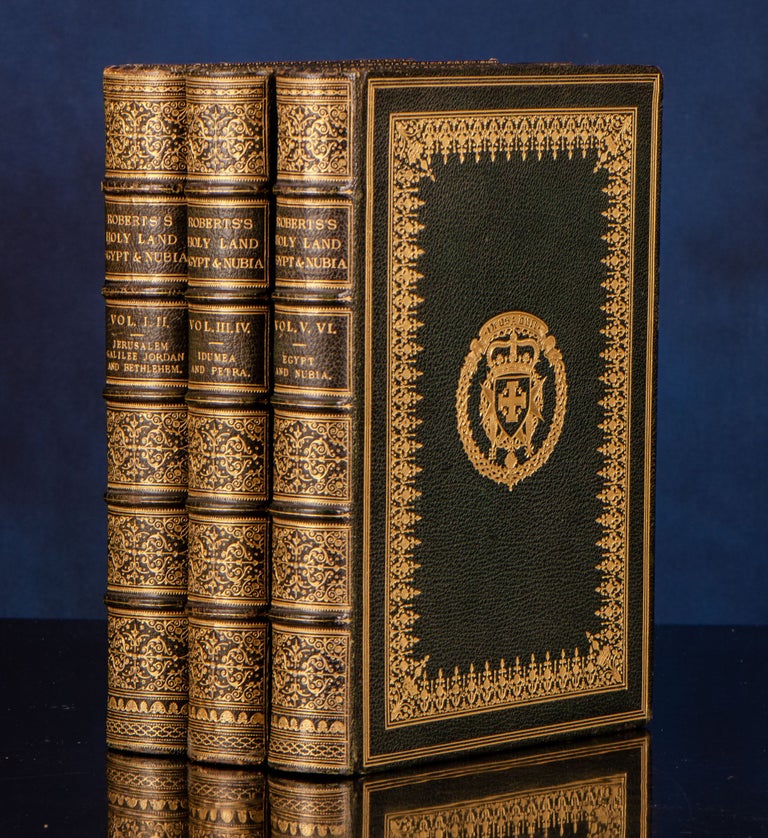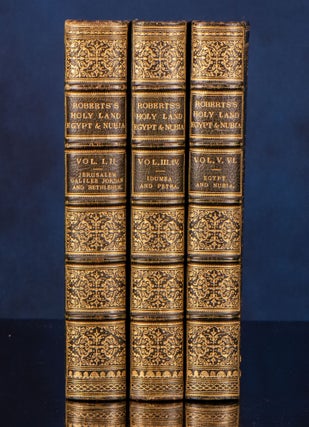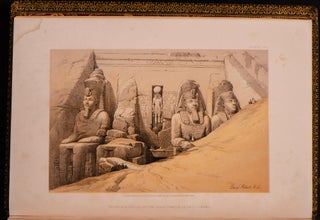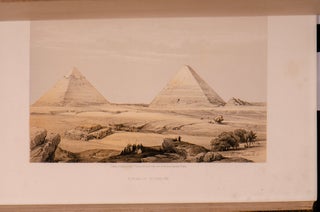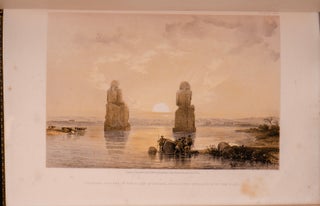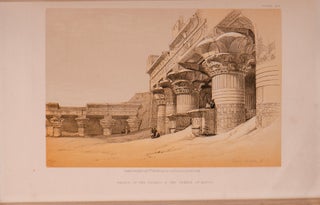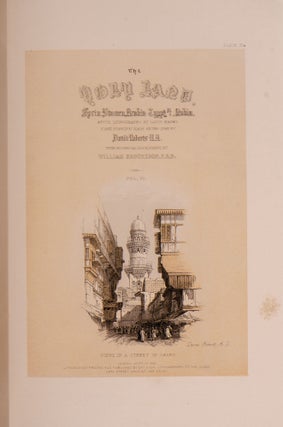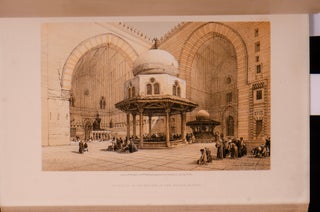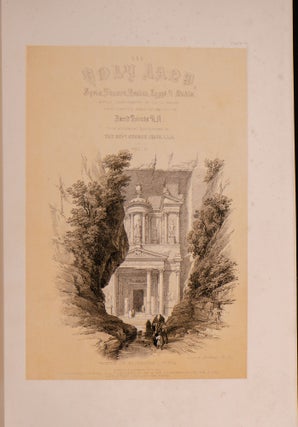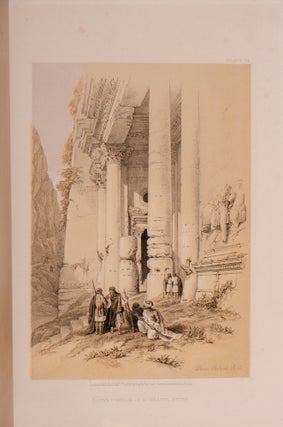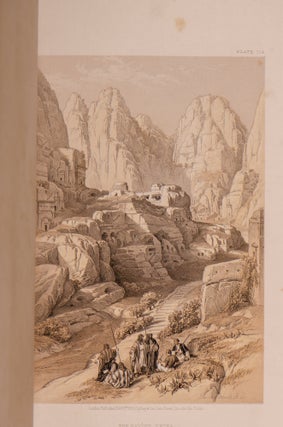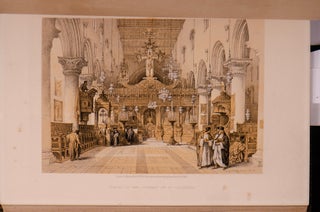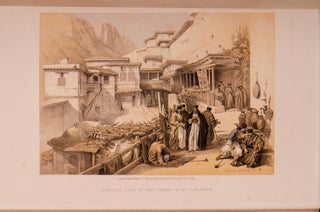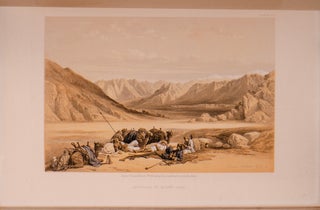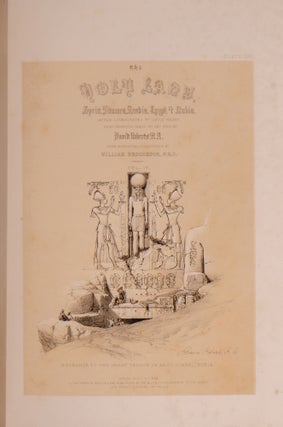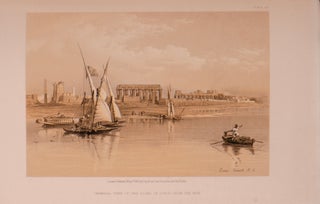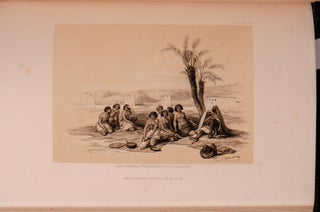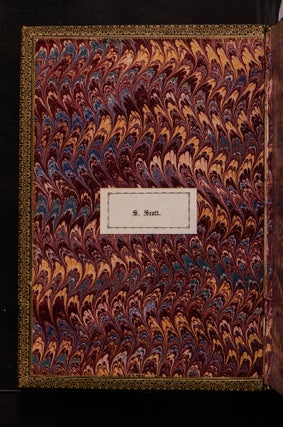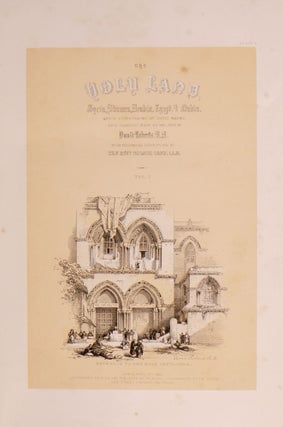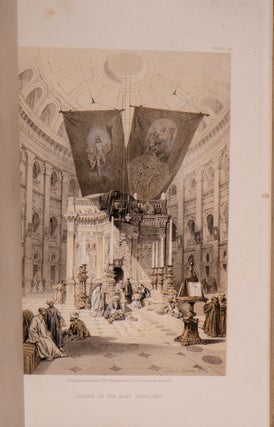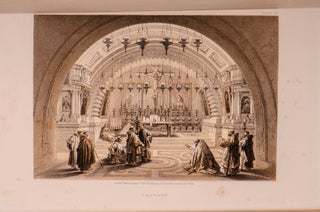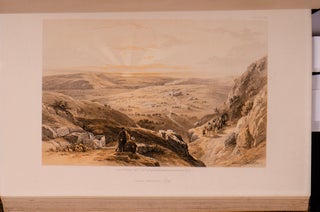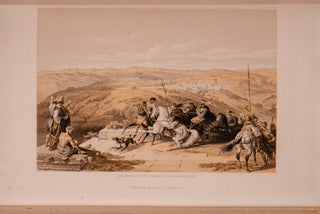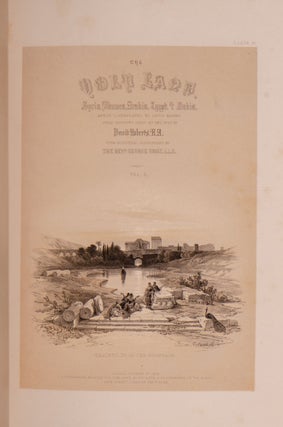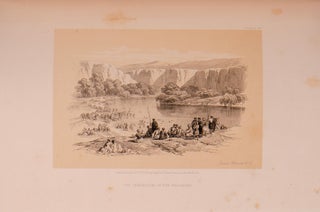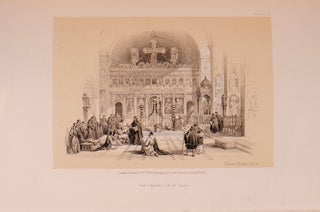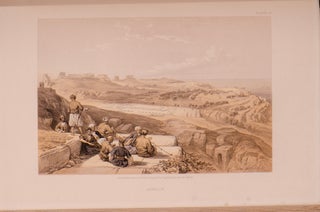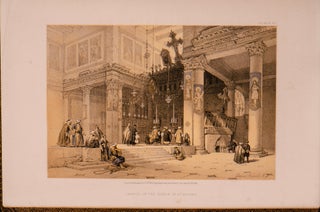The Holy Land, Syria, Idumea, Arabia, Egypt, & Nubia
London: Day and Son, 1855. Item #05524
The First Quarto Edition in the Deluxe Binding
The Most Ambitious Work Ever Published In England
With 250 Lithographed Plates
ROBERTS, David. The Holy Land, Syria, Idumea, Arabia, Egypt, & Nubia after Lithographs by Louis Haghe from Drawings made on the spot by David Roberts, R.A. With Historical Descriptions by the Revd. George Croly, L.L.D. London: Lithographed, Printed and Published by Day & Son, 1855-1856.
First quarto edition. Six volumes bound in three quarto volumes (11 1/2 x 7 7/8 inches; 292 x 200 mm.). Complete with 250 tinted lithograph plates, including frontispiece portrait in Volume I, title-pages, and maps (untinted), all with tissue guards.
Original 'deluxe' binding. Full dark green hard-grain morocco with triple fillets surrounding an elaborate, richly decorative gilt panel. Spines with five raised bands, elaborately decorated and lettered in gilt in compartments, gilt ruled board edges, gilt decorated turn-ins, marbled end-papers, all edges gilt Rectangular engraved bookplate of S. Scott on front paste-downs. Some light intermittent foxing, mainly marginal, affecting the verso of the plates and the text.
A wonderful set in its original deluxe binding with the plates far cleaner than is usually seen.
This is the quarto edition of one of the most important and elaborate ventures of nineteenth century publishing, Roberts' monumental folio edition of the same title, considered to be the most ambitious work ever published in England with lithographed plates, and a book like no other: bigger, more beautifully bound, more lavishly illustrated. It was funded through advance subscriptions which Roberts directly solicited. The scenery and monuments of Egypt and Holy Land were fashionable but had hitherto been hardly touched by British artists, and Roberts quickly accumulated 400 subscription commitments, with Queen Victoria being subscriber #1. Her complete set is still in the Royal Collection. The plates were reduced to the necessary size for this edition by means of photography but nonetheless retain all the vibrancy of the folio plates.
The man behind the world's most expensive travel book was no gentleman adventurer.
David Roberts (1796-1864) was born at Stockbridge near Edinburgh, and at the age of ten apprenticed to house-painter Gavin Buego. After his apprenticeship he continued to work for Buego carrying out work on imitation stonework and panelling at Scone Palace and Abercairney Abbey. By 1818 Roberts had become assistant scene painter at the Pantheon Theatre in Edinburgh, moving on to theatres in Glasgow, and finally in 1821 to the Drury Lane Theatre in London, where he worked wth Clarkson Stanfield. Both artists exhibited at the Society on British Artists, Royal Academy, and by 1830 Roberts was firmly established as a topographical artist and was able to give up is theatre work. IN these early years he toured the Continent and Scotland, and in 1832-1833 visited Spain. In 1838, he made plans for his journey to the Near East, inspired by a love of artistic adventure. Departing in August 1839 for Alexandria, he spent the remaining part of the year in Cairo, visiting the numerous tombs and sites. In February of the following year he set out to cross the desert for the Holy Land by way of Suez, Munt Sinai, and Petra, arriving in Gaza, and then on to Jerusalem, concluding his tour visiting the biblical sites of the Holy Land for several months. He returned to England at the end of 1839. The drawings of his tour were subitted to F.G. Moon in 1840, who arranged to bring out a work illustrative of Scripture history, paying Roberts £3,000 for the copyright of the sketches, and for his labor in supervising Louis Haghe's lithography.
Abbey, Travel, 388.
Price: $12,500.00

 I have been in the rare and antiquarian book business for over forty years; my family has been in the rare books business since 1876. Rare books are in my blood.
I have been in the rare and antiquarian book business for over forty years; my family has been in the rare books business since 1876. Rare books are in my blood.
